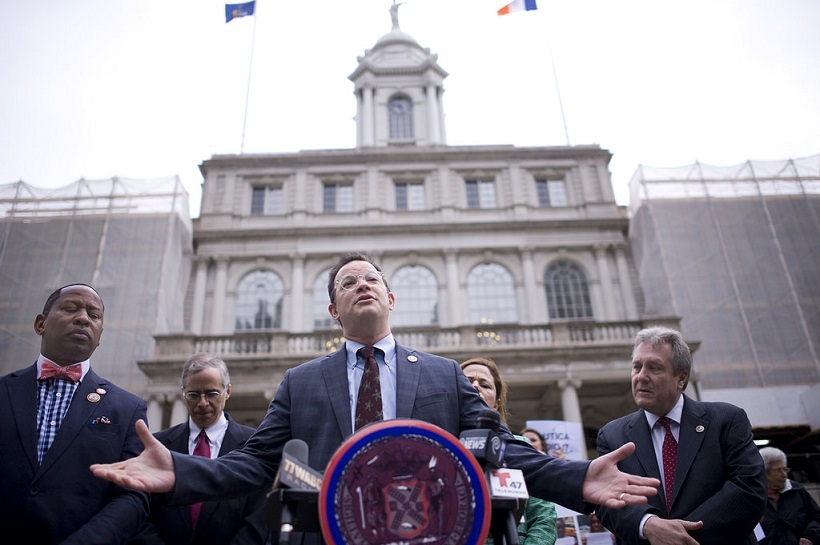
New York City Council
Andrew Cohen is one of nearly two dozen Council members who have agreed to allow neighborhood residents determine how a share of his discretionary capital money is spent.
Amid the vastness of New York City’s $75 billion operating budget and $6 billion capital budget, what does a million dollars buy? That’s what residents of a northwest Bronx City Council district will find out over the next year in a participatory budgeting process that took an early step in Norwood last night.
Participatory budgeting originated in Brazil as a way to give residents more direct control over the central task of government—namely, spending money. The idea is not just make that spending more responsive to constituent needs, but also to use the budgeting process to better engage people in democracy.
The practice began in New York in 2012, ahead of the 2013-2014 fiscal year, with four City Councilmembers setting aside $1 million apiece from the capital money over which they have discretion. Over a series of meetings, residents developed funding proposals and presented them to participants, who voted to select winning projects. In the budget cycle that ended last month, nine Council districts were involved. This fiscal year, some 22 members are on board.
Among them is Andrew Cohen, the freshman councilmember representing district 11 in the Bronx, which covers the borough’s northwest—Riverdale, Kingsbridge, Van Cortlandt Village, Norwood, Bedford Park, Woodlawn and part of Wakefield. At a lightly attended community meeting last night in the recreation center at Williamsbridge Oval Park, Cohen’s staff continued their kick-off of what they say is the first participatory budgeting effort in the Bronx. (Council Speaker Melissa-Mark Viverito, who now represents a Manhattan-Bronx district, has done PB since its introduction in New York. And Cohen’s Bronx colleague Ritchie Torres has pledged to do it as well.)
“What we want to do is engage our residents civically,” said Dan Johnson, a Cohen aide. “And also give them more confidence in government.”
Capital projects have to cost more than $35,000 and have a usable life of at least five years. In the budget cycle that ended in June, councilmembers were given $5 million each to spend on capital. It’s unclear how much they’ll have to dole out next year. In this year’s participatory budgeting process, winning projects included senior centers, pathways through parks and ADA-complaint swing-sets. Most participating councilmembers ended up devoting well over $1 million to the selected projects.
In district 11 and citywide, the process will begin with assemblies in September and October to solicit ideas. Delegates will shape the ideas into proposals in the late fall and early winter for display at “project expos” in February and March. Finally, the community will vote in March or April. Anyone who has a strong tie to a community and is over 14 can participate in the process, but only local residents 16 and older can vote.
Anthony Rivieccio, one of about a dozen community members who attended Thursday’s meeting, called it “a good start.” One concern, he said, was whether a process that depends on resident participation would give equal attention to very different neighborhoods; Riverdale is generally thought to be the center of gravity of the 11th district. But there have been assurances by Cohen’s staff that they’re aware of the risk. “I’m definitely going to be keeping an eye on the process,” Riviecchio said.








